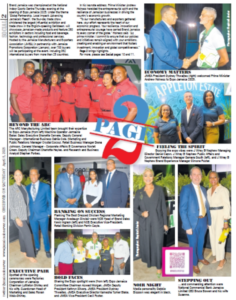The Game of Kings
“Let other people play at other things. The King of games is still the game of Kings.”
This verse is inscribed on a stone tablet next to a polo ground in Gilgit, north of Kashmir in Pakistan, near the fabled silk route from China to the West. If not only epitomises the feelings of the players today, but sums up the ancient history of what is believed to be the oldest organised sport in the world.
Often referred to as the “Game of Kings”, in recent years though this one-time preserve of the rich and famous has grown in popularity not only amongst players, but spectators as well, and it is easy to see why. With professional players the like of Adolfo Cambiaso, who is capable of controlling a game from the back, from the middle and from the front — the defensive mastermind, the playmaker and finisher (a jack of all trades), with charm and sophistication, not to mention good looks — one cannot help but be seduced by such skills and showmanship Cambiaso is a composite of David Beckham, Pele and Diego Maradona.
Sometimes described as hockey on horseback, among equestrian sports, polo has indeed no equal; the game demands from both man/woman and horse the maximum of strength, agility, endurance and courage. With its origins embedded in Central Asia, the first recorded game occurred about 600 BC in North Persia and to this day the Great Square of Ispahan, with its pillars nine feet high and 24 feet apart, is proof of the love that ancient Persians had for this game. In the early days polo was a training game for the Cavalry Units for the Kings Guard or other elite troops, who played polo with 100 players to a side, and looked more or less like a miniature battle. It is said once to have been played with the heads of sheep, goats and other animals and in the days of Genghis Khan, even the severed heads of conquered enemies are said to have been used.
Nowadays, even though there are only four players to a side, the “battle” element however is still very much in evidence, as horses and riders move up and down the field at speeds of up to 40-odd miles an hour. The “heads” have been replaced with a little white ball, which used to be made of wood, but now is made of a composite plastic material.
From Persia the game spread to Arabia, Tibet, China and Japan — at this time the game was completely unknown in the Western World. The game declined in the Orient with the fall of the Moghul Empire, remaining most active in the remote villages and regions of the Himalayas, Karakoram and Hindukish. Nowadays, one can still find a lot of people in the north of Pakistan who are passionately fond of polo. There are even those who view playing it as one of the chief occupations for which they were sent to this world- this is true nowadays even in the Western world. Every July, the Shandur Pass in northern Pakistan is the setting for a polo festival played to rules 800 years old on what is, perhaps, the highest polo ground in the world. Established in the 1920s when the ruler of Moskuj, the Hindukush highland between Chitral and Gilgit, was told by his Mir, or King, to promote integration within his realm through a polo tournament between the best players.
The British resident at the time, Col Evelyn Hey Cobb, a keen polo player himself, came up with the idea of holding the tournament in the Shandur Pass, approximately 11,000ft above sea level, in what is now northern Pakistan. The site is described dramatically as being on the ridge between Heaven and the descent to Hell. Col Cobb felt that, because the moon seemed so close to Earth, his dream of playing polo in the light of a full moon could be realised. It was agreed that the games should be held between the best teams from Chitral and Gilgit, and played following the centuries-old rules of Ali Sher Khan, a descendant of Genghis Khan. This meant that a game would last for an hour, with a short break between two 30-minute chukkers. Each player would be allowed only one horse for the duration of the match, and stoppages would be allowed only for serious injuries to a horse or player. Should, for some reason, a horse or player cease to play, his opposite number in the other team would have to leave the field. If the ball went out of play, it must be thrown back immediately by one of the spectators. Lastly, each team should consist of six players with, as already noted, one horse per man. It says much for the attraction of the Shandur Pass polo festivals that the players of the six invited teams — three from either side of the Pass — must also endure this dangerous trek. Even more alien to the modern western player is the fact that the ponies of participating teams must face a five-day march. In order to acclimatise the ponies – and only one per player is still allowed, it should be remembered – small training games are held every night, when camps have been made on the trail. To this day, this event is an eagerly anticipated one, to which spectators and supporters travel between nine and 13 treacherous hours to get there. The historic tournament is also a major tourist attraction, with more people arriving each day. Before long, the empty Hindukush landscape is transformed into a bustling, scent-filled marquee town. Until the final on the Sunday, when the two ‘A’ teams from Chitral and Gilgit meet, in excess of 10,000 spectators, who somehow appeared from nowhere, will be camping out in temperatures that reach -10C at night and +40C during the day.
Although the first polo club, the Retreat in Silchar in India was founded in 1859, no formal rules were produced until 1875 when Hurlingham in London became the recognised headquarters of the game. During the past 150 years, the game has expanded throughout the world and is now regularly played in over 70 countries by an estimated 60,000 people. Once an Olympic sport, it was last played in 1936 at the Berlin Olympics — the games that became better known as “Hitler’s Olympics”. Many attempts have been made since to reinstate the game as an Olympic sport, however, they have not been successful The FIP World Cup, which is played for every four years, is the modern-day “Olympics” for polo players – played for by national teams, it is the closest that individual countries have come to competing against each other on a wider scale since Berlin. One of the oldest trophies still in existence, initially played mainly between military teams, is the challenge match between the USA and Britain — the Westchester Cup. It was inaugurated in 1886, and is still played for to this day. The last match in 2009 was won by the British with much fanfare. It is one of polo’s most treasured pieces of silverware, and has been played for only 14 times in the intervening years and won 10 of the 14 times by the Americans. It is the America’s Cup of Polo.
The principal playing countries are currently Argentina, USA, Great Britain and Australia. Since the last war, however, Argentina has consistently set the standards for the modern- day game and has produced both the best players and ponies most suited to the sport – earning it the undisputed reputation as the modern-day “Polo Capital” of the world. This is reflected in the fact that the majority of the travelling professional players and indeed some of the finest are from Argentina. They follow a worldwide circuit where polo is played according to season, commencing in West Palm Beach, Florida in January, then moving on to England and Europe from May to August, then back to Argentina in September, culminating with the Argentine Open in December – the highest handicapped polo tournament of the year. The Australian and New Zealand seasons run concurrently with the High Goal season in Florida, commencing in December/January and culminating in April.
To a certain degree professional polo is still sustained by the generosity of wealthy patrons. However, in recent years, due to its increased popularity as a spectator sport, this has been subsidised by the involvement of an increasing number of corporate sponsors at the event and team levels. The continued survival and growth of the sport over the next 150 years though, is very much dependent on the ongoing support of such generous corporate sponsors.
Polo in Jamaica
The British Army established polo in Jamaica at the West India Regiment Garrison Club in 1882. Many clubs have come and gone over the years, such as the St Elizabeth Polo Club at the foot of Spur Tree, the Blue Hole Polo Club near Lucea and The Hanover Polo Club.
However, two have endured for over 100 years. The Kingston Polo Club was formed for civilians in 1886 at Knutsford Park (now New Kingston). It then moved to the middle of the Caymanas Race Track and is now situated on the other side of the Mandela highway just below the Caymanas Golf Club. In 1892 Sam Burke founded the St Ann Polo Club, which moved to its present location at Drax Hall Estate in 1905 and boasts one of the oldest polo fields in the world. The Chukka Blue facility was rebuilt on the site of what was previously the Hanover Polo Club, which was over 30 years old, and had changed ownership twice in the intervening years. The viability of the field was threatened with the development of the North Coast Highway, however, after numerous negotiations it was agreed by the North Coast Construction company that the field would be relocated and rebuilt (at their cost) to accommodate the highway. The new field was then renamed Chukka Blue, and eight years on polo is being played in Hanover once again.
Inter Club competition started in 1898 between Garrison (Up Park Camp), Kingston, St Ann, St Catherine and St Mary Polo Clubs. In 1907, Bertie Verley was killed in the Great Earthquake and the AJPA. introduced the Senior Cup (that is played for to this day) to replace the Dewar Cup which was also destroyed in the quake. Throughout its history the island has boasted an average of some 30 to 50 players and anywhere from two to five clubs at any given time. Polo has endured in Jamaica despite physical and economic setbacks.
— Karen Kranenburg
The Scotia Private Client Group Jamaica Open kicks off at the Kingston Polo Club on 20th April at 3:30 pm, with the grand finale on Sunday 25th April 2010. For match info and times check www.poloandmore.com, or call +1 876 322 3136.












